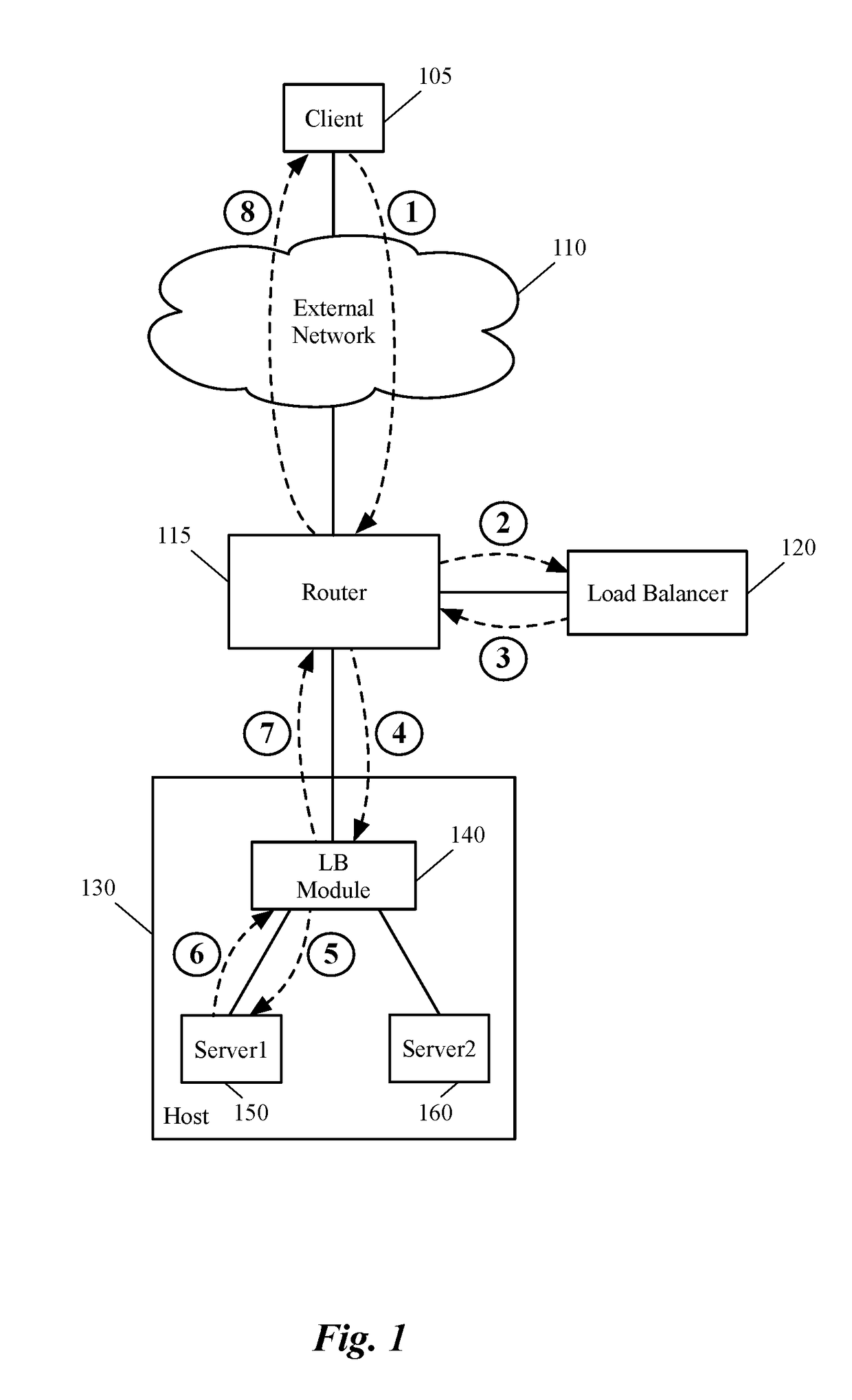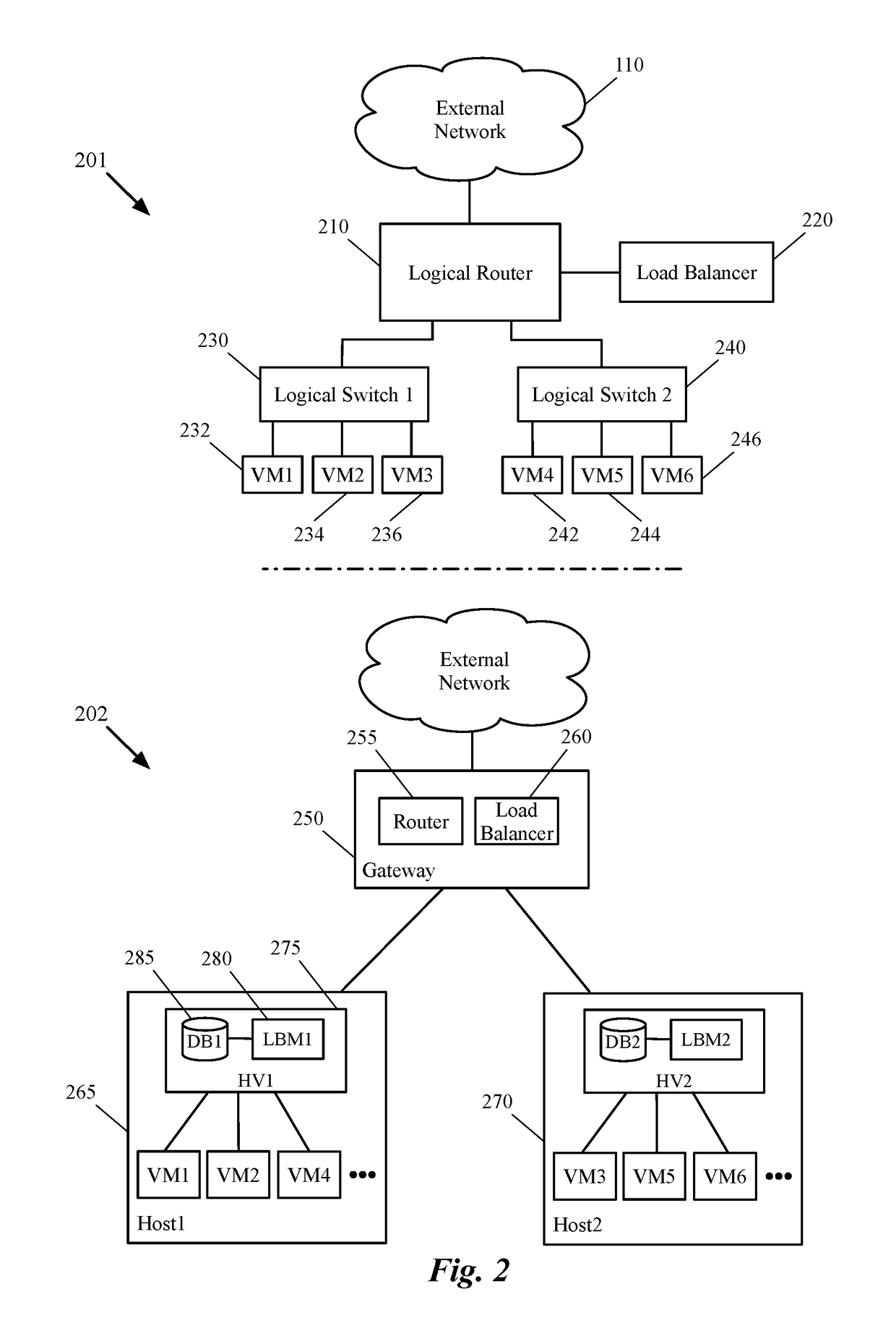Bypassing a load balancer in a return path of network traffic
a load balancer and network traffic technology, applied in the direction of digital transmission, data switching networks, electrical equipment, etc., can solve the problems of significant disruption and inefficiency of network throughput, serious security risks for the network, and load balancers creating bottlenecks in the path of network traffi
- Summary
- Abstract
- Description
- Claims
- Application Information
AI Technical Summary
Benefits of technology
Problems solved by technology
Method used
Image
Examples
Embodiment Construction
[0039]In the following detailed description of the invention, numerous details, examples, and embodiments of the invention are set forth and described. However, it should be understood that the invention is not limited to the embodiments set forth and that the invention may be practiced without some of the specific details and examples discussed.
[0040]Some embodiments provide a method that allows a first data compute node (DCN) to forward outgoing traffic directly to a second DCN in spite of receiving the incoming traffic from the second DCN through a load balancer. That is, the return traffic's network path from the first DCN (e.g., a server machine) to the second DCN (e.g., a client machine) bypasses the load balancer, even though a request that initiated the return traffic is received through the load balancer. The method of some embodiments does not require any changes in the configuration of the first DCN (e.g., the server) in order to bypass the load balancer. That is, even th...
PUM
 Login to View More
Login to View More Abstract
Description
Claims
Application Information
 Login to View More
Login to View More - R&D
- Intellectual Property
- Life Sciences
- Materials
- Tech Scout
- Unparalleled Data Quality
- Higher Quality Content
- 60% Fewer Hallucinations
Browse by: Latest US Patents, China's latest patents, Technical Efficacy Thesaurus, Application Domain, Technology Topic, Popular Technical Reports.
© 2025 PatSnap. All rights reserved.Legal|Privacy policy|Modern Slavery Act Transparency Statement|Sitemap|About US| Contact US: help@patsnap.com



